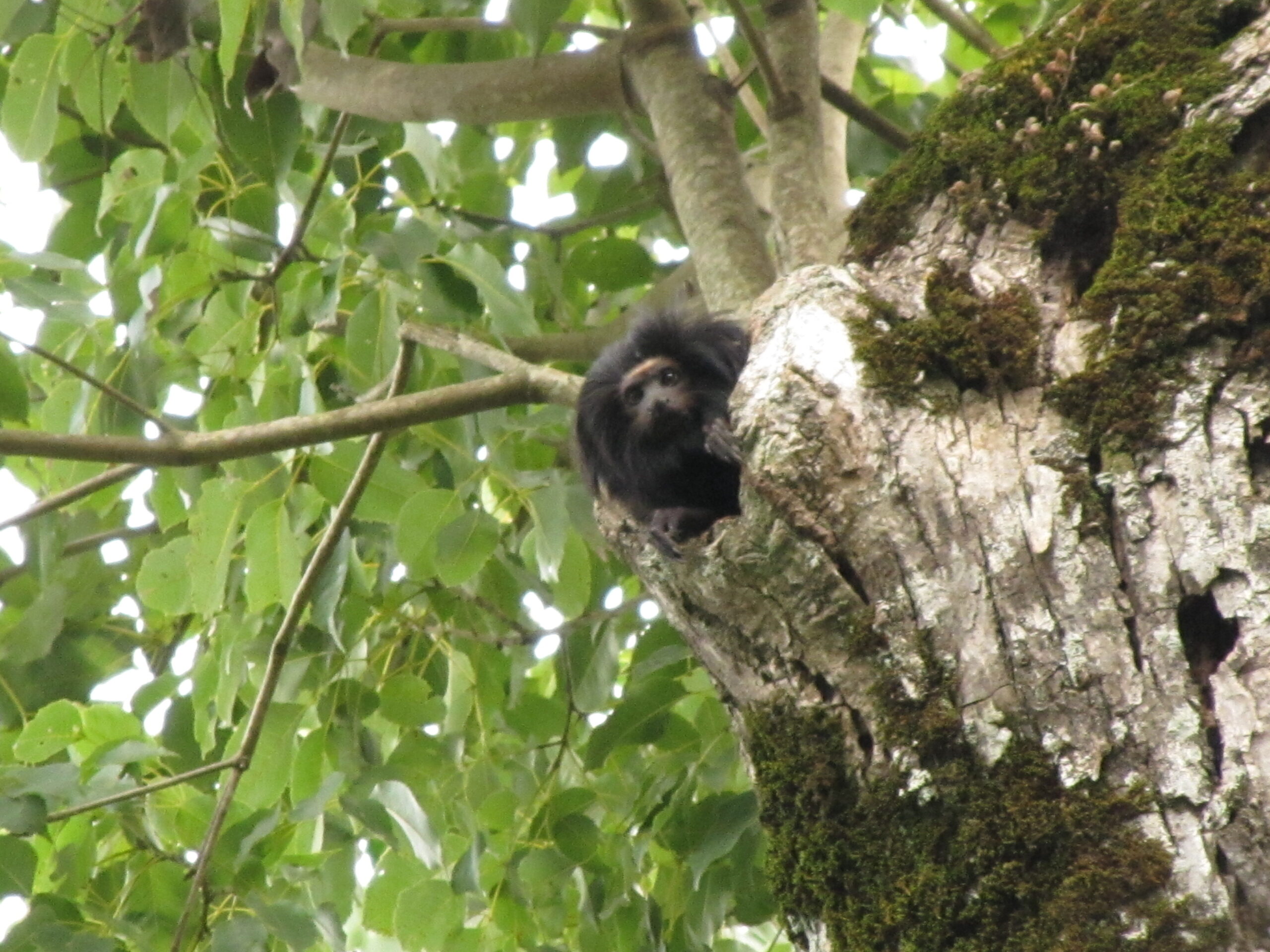::cck::867::/cck::
::introtext::
The black-lion-tamarin (Leontopithecus chrysopygus), an endangered species that only occurs in the interior of the state of São Paulo, was the subject of the first environmental conservation study by IPÊ – Institute for Ecological Research, which, thanks to research on the primate, expanded its actions with landscape restoration and environmental education projects.
Despite extensive research over 35 years, unprecedented data still emerges about the species. The most recent studies analyzed the influence of the structure of the forest– conserved or degraded – on the conservation of the black-lion-tamarin and were presented at the Virtual Meeting of the Association for Tropical Biology and Conservation (ATBC), from 21 to 23 July.
Gabriela Rezende, who is a Ph.D. candidate in Ecology, Evolution and Biodiversity (UNESP – Rio Claro) and also a Master from ESCAS-IPÊ leads the research. The study analyzed data from “backpacks” with GPS (small mechanism for monitoring animals) in four groups of tamarins in two different areas: in a very conserved area, the Ponte Branca fragment, from the Mico-leão-preto Ecological Station (ICMBio ), in the far west of São Paulo; and in an intensely fragmented area, in the municipality of Guareí (also in São Paulo).
The difference between these areas is also present in the dimensions. The area analyzed at the Ecological Station has 1,303 hectares, the equivalent of a little bit over 1,000 soccer fields. The area in Guareí is only 105 hectares – around 100 football fields. The groups were followed for 10 to 22 consecutive days, between September 2019 and February 2021. The original research data were presented at the Virtual Meeting of the Association for Tropical Biology and Conservation (ATBC), this week (July 21 to 23). ), in an online meeting.
“The data showed that the groups in the smaller fragment also have reduced home ranges, up to five times smaller than the home ranges used by the Ecological Station groups. In addition, in Guareí there was an overlap of up to 37% of these neighboring territories, whereas in Ponte Branca this was not observed. These results suggest a strong fragmentation effect in the use of space by the tamarins. The most interesting is that, despite this difference between the areas, the distance traveled by the tamarins per day is on average 2 .6 km in both areas”, reveals Gabriela Rezende, who signs the research together with Milene Alves-Eigenheer (UENF), Luca Börger (Swansea University – United Kingdom), Daniel Felippi (IPÊ), Gabriel P. Sabino (UNESP – Rio Claro) and Laurence Culot (UNESP – Rio Claro).
In the next phase of the research, the goal is to quantify the energy expenditure of animals in these areas and integrate information about the structure of the vegetation in the analyzes to understand what may cause these variations.
High risk of extinction
Francy Forero Sanchez, a researcher at IPÊ’s Black-Lion-Tamarin Conservation Program, sought to estimate whether known populations will continue to resist in the long run. To obtain this data, Francy used the Population Viability Analysis (PVA) methodology, through software that aligned these variables to the threats present in each region.
“The viability and health of the tamarin population demand at least 98% genetic diversity in the population. This makes the species more resistant to disease, for example. The risk of extinction threat must be less than or at most equal to 2%, the smallest possible. What we saw is that in this scenario, among the 17 populations analyzed, only two are viable in the long term (100 years, equivalent to 13 generations), especially due to the number of individuals. Six populations can become extinct on average in 25 years due to a combination of factors involving: isolation, low genetic variability, and threats. Based on the analysis of all these variables, the minimum population to guarantee the species’ viability is 800 individuals”, he highlights.
In Francy’s opinion, the study reinforces the importance of the continuity of IPÊ’s actions, both related to habitat recovery and the management of small groups. “The smaller the tamarin populations and the more isolated due to the fragmentation of the landscape, the greater the risks. Long-term conservation of the species is related to increased connectivity between fragments. This action has the potential to contribute to gene flow. In the same measure, we need to implement effective management strategies involving individuals, especially small populations isolated in small fragments”. Francy is also a Master in Biodiversity Conservation and Sustainable Development, by ESCAS/IPÊ – School of Environmental Conservation and Sustainability.
Francy is co-authored by Gabriela Rezende (UNESP/IPÊ), Kathy Traylor-Holzer (CPSG/UICN), Cláudio Valladares Padua (ESCAS) and Arnaud Desbiez (ICAS/IPÊ).
::/introtext::
::fulltext::::/fulltext::
::cck::867::/cck::


